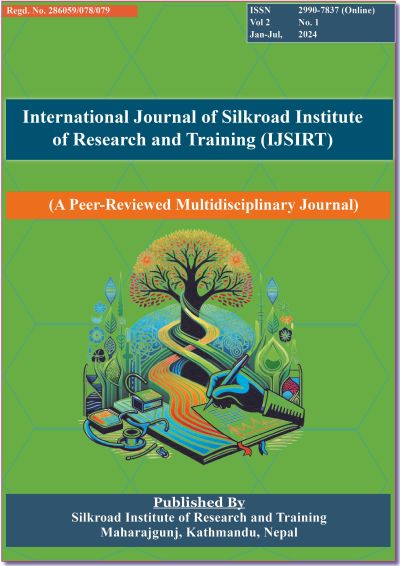Cephalometric Floating Norms of Nepalese Adults Visiting People’s Dental College and Hospital with Harmonious Skeletal Pattern
Abstract
Background:Orthodontics blends art and science, with facial aesthetics reflecting orthodontists' creative insights, making
proper diagnosis and treatment planning crucial for successful outcomes. This study aims to establish cephalometric floating
norms for Nepalese adult patients.
Method: A cross-sectional study was conducted among adult patients visiting People’s Dental College and Hospital from
August 2018 to August 2019. The lateral cephalograms were selected based on inclusion and exclusion criteria. Pearson
correlation coefficient was used to identify the highly correlated variables among the five parameters (SNA, SNB, NSBa,
ML-NSL and NL-NSL). The bivariate linear regression analysis was used to construct a harmony box, which contained
the cephalometric floating norms of the five correlated variables. Multiple regression analysis and the standard error of
the estimate were calculated to construct the harmony schema, which describes the individual craniofacial pattern. Mean
values of the continuous variables were compared (skeletal parameters) between gender, age group and ethnicity using
independent sample t-test.
Result: This study included 144 lateral cephalometric records, with 74% females. Statistically significant correlations were
found among the five variables (SNA, SNB, NSBa, ML-NSL, NL-NSL), with SNB showing the highest correlation and
used as the main variable for the regression equation. Significant gender differences were noted for NL-NSL (p < 0.05), but
no significant differences were found among different ethnic and age groups. The harmony box illustrated linear regression
equations, while the harmony schema was developed from standard errors and means of cephalometric measurements.
Comparing Filipino and Nepalese adults showed Filipinos with a retrognathic maxilla and prognathic mandible, while
Czech adults showed a retrognathic maxilla compared to Nepalese adults.
Conclusion: Cephalometric floating norms describing the individual craniofacial pattern among Nepalese adults were
established based on five correlated variables in the form of a harmony box.
Downloads
Downloads
Published
How to Cite
Issue
Section
License
Copyright (c) 2024 Natasha Shrestha , Shakti Sharma, Prabhas Roy, Prajwol Singh Kunwar

This work is licensed under a Creative Commons Attribution-ShareAlike 4.0 International License.
CC BY-SA: This license allows reusers to distribute, remix, adapt, and build upon the material in any medium or format, so long as attribution is given to the creator. The license allows for commercial use. If you remix, adapt, or build upon the material, you must license the modified material under identical terms.




